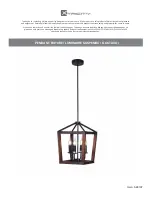
9 Kinetics and affinity analysis
9.1 Requirements for kinetics and affinity evaluation
154
Biacore T100 Software Handbook BR-1006-48 Edition AE
Figure 9-1.
In multi-cycle kinetics and affinity determinations, each sample is injected in
a separate cycle. The concentration series is presented as an overlay plot aligned at the
start of the injection in the evaluation software.
In single-cycle determinations, the samples are injected sequentially in the same cycle.
Arrows in the illustrations mark the start of sample injections.
9.1
Requirements for kinetics and affinity evaluation
The minimum requirements for evaluation of kinetics or affinity are one cycle
with a
Sample
injection in an assay step with purpose
Sample
, and with the
sample concentration in the keyword
Conc
. If the concentration is not given in
molar-based units, the keyword
MW
must also be included with a value for the
molecular weight. For method-based runs, the method must be correctly
constructed as described in Section 5.10.2: if necessary, the keyword table can
be edited so that the conditions are met in full (see Section 6.6). Note however
that the command type cannot be edited in the keyword table. Refer to
Chapter 5 for details of how to construct methods in Method Builder.
The recommended minimum conditions for kinetic and affinity evaluation are:
•
a concentration series of analyte with at least four non-zero
concentrations
•
at least one blank cycle consisting of zero concentration sample (for
single-cycle kinetics the blank cycle must replicate the sequence of
injections in the analysis cycle)
•
for multi-cycle kinetics, duplicate determinations for at least one non-zero
concentration.
These conditions are recommended but not mandatory in the
Kinetics/Affinity
wizard.
Summary of Contents for Biacore T100
Page 1: ...GE Healthcare Biacore T100 Software Handbook ...
Page 2: ......
Page 8: ...8 Biacore T100 Software Handbook BR 1006 48 Edition AE ...
Page 13: ...Biacore T100 Software Handbook BR 1006 48 Edition AE 13 Control Software ...
Page 14: ...14 Biacore T100 Software Handbook BR 1006 48 Edition AE ...
Page 30: ...3 Manual run 3 4 Ending a manual run 30 Biacore T100 Software Handbook BR 1006 48 Edition AE ...
Page 103: ...Biacore T100 Software Handbook BR 1006 48 Edition AE 103 Evaluation Software ...
Page 104: ...104 Biacore T100 Software Handbook BR 1006 48 Edition AE ...
Page 207: ...Biacore T100 Software Handbook BR 1006 48 Edition AE 207 Appendices ...
Page 208: ...208 Biacore T100 Software Handbook BR 1006 48 Edition AE ...
Page 236: ...236 Biacore T100 Software Handbook BR 1006 48 Edition AE ...
Page 237: ......
















































